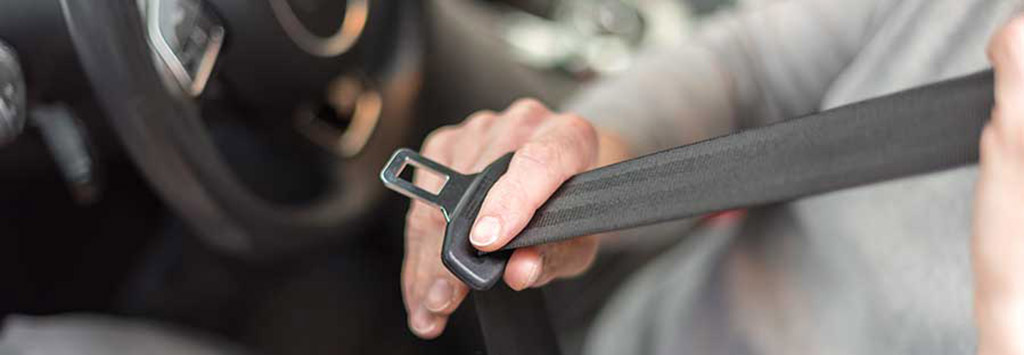Safety Guidelines For Delivery Drivers
As a delivery driver you have a much greater risk of accidents and injuries than other employees. Follow these 5 steps to stay safe and limit injuries and accidents.

Your priorities should be (1) taking the safest route, then (2) expediency of delivery to the customer. Even though your company might have the fastest delivery times, safety is imperative!
The following areas of focus were developed for your protection AND the protection of the company, the customer, and the general public. To ensure a positive and productive delivery culture, please follow these guidelines.
Five Areas for Delivery Driver's Protection
1. Vehicle Inspection
The driver is responsible for inspecting their vehicle prior to the day’s first delivery. The driver will want to check all of the following elements of the delivery vehicle:
- The vehicle must have current and valid registration, proof of insurance, and a valid inspection if required by the state of operation.
- Check tires for proper inflation and that the tire tread is at least 5/32nds.
- Inspect windshield wipers and fill the wiper reservoir.
- Check the windshield’s condition. Are there any cracks in the driver’s line of sight?
- Ensure brakes are working properly.
- Inspect headlights, tail lights, turn signals, brake lights, and backup lights. If any are not working, replace them before starting the shift.
- Inspect backup cameras. Is the camera working and does the camera need to be cleaned of debris or dust?
- Ensure the horn is in working order.
- Check the side and rearview mirrors to ensure they are in good condition and properly adjusted for your driver’s specifications.
- Ensure seatbelts are working properly.
- Install appropriate signage identifying the business vehicle.
2. Standard Best Practices
Safety on the road and at customer locations is imperative. Be sure the following is adhered to:
- Seatbelts are required at all times while driving.
- Due care and caution in the operation of the vehicle must strictly comply with all laws and safe driving rules of the road, including all speed limits, posted directional signs, and parking regulations.
- When arriving at the customer location, avoid backing as much as possible. If you need to back, do so only when you have a clear view of the parking space. When leaving, walk around your vehicle and check the underside and topside before you pull away from your space.
- Pay attention to all walking surfaces when getting in and out of the vehicle, as well as stairs and walkways at customer locations. Do not cut through yards or run during a delivery as it increases the risk of a fall and saves little time.
- Under no circumstances shall a driver operate the vehicle while under the influence of drugs or alcohol. Please inform your supervisor/manager of prescribed medication that may affect your mental and/or physical ability to drive safely.
3. Operate the Vehicle With Limited Distractions
These include, but are not limited to, the following:
- Cell phones may only be used when the vehicle is parked safely off the road or in a parking area. You must find a safe parking area to text or talk.
- No eating in your vehicle while on deliveries.
- Loud music may distract the driver or impair the ability to focus on the driving task. Listening to music on deliveries is not recommended, however, when done, the volume must be low.
- Passengers are not allowed in the delivery vehicle unless approved by your supervisor/manager in advance.
- When using GPS, minimize distraction by having a clear view of the road and use voice control to aloow your eyes to remain on the road.
4. A Safe Delivery is More Important than a Fast Delivery!
Key reminders to prevent accidents and injuries through safety:
- Always lock the vehicle when parked or in use.
- Park in a safe, well-lighted area.
- Never leave the vehicle running or leave keys in the ignition when making a delivery.
- Do not deliver to a house that looks vacant. If in doubt, call the customer and request they meet you outside and/or turn on exterior lights.
- Do not deliver to the back or side of a dark building.
- Call 911 if something looks suspicious or dangerous in the area. Then, be certain to call your supervisor to report.
- If delivering for a restaurant, carry less than $20 in cash, or follow the specific guidelines for your restaurant on cash and credit cards.
- Know in advance your company’s policy when a customer disagrees with their food, delivery, cost, etc.
- Activate your vehicle’s remote alarm (if available) to draw attention to yourself if you feel threatened.
5. Inclement Weather Handling
When the weather is bad, customers are more inclined to order food delivery. Be prepared for heavy delivery nights during inclement weather or special events:
- Take extra precautions during special events or bad weather as driving may be treacherous, or the traffic may be heavy.
- Let customers know when placing their orders the delivery times will be longer due to the inclement weather or special events.
- Wear enclosed toe, non-slip shoes when delivering in inclement weather.
- Carry a flashlight to assist in walking on dark sidewalks and to find addresses.
Categories
Recent Posts

Request a Quote
Ready to take control of your insurance? Request a quote and get the coverage you need all in one place. Remember your broker can’t access us and we don’t interfere with their marketing.